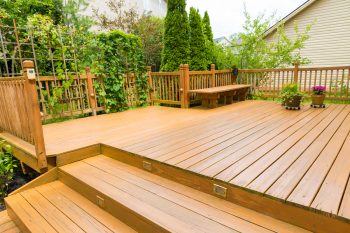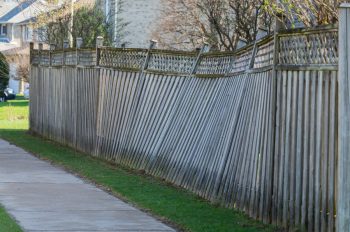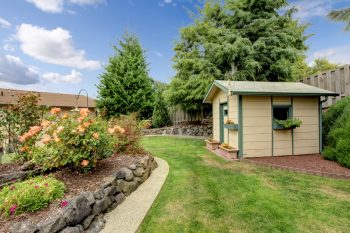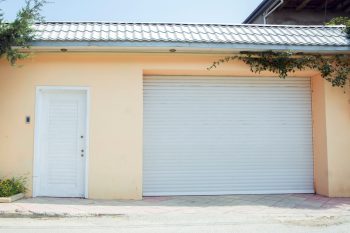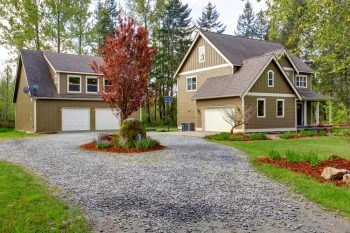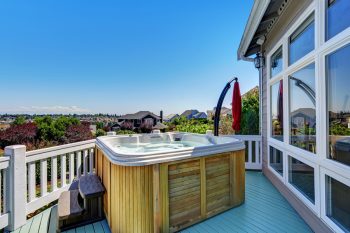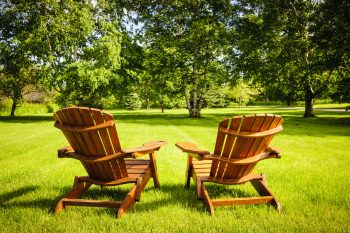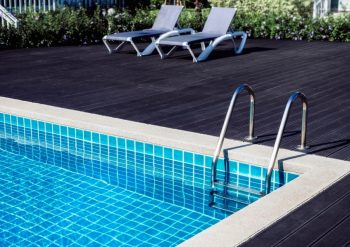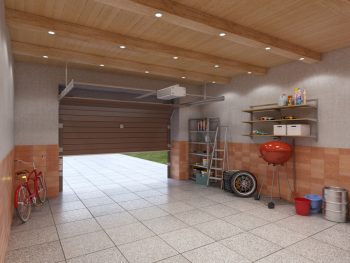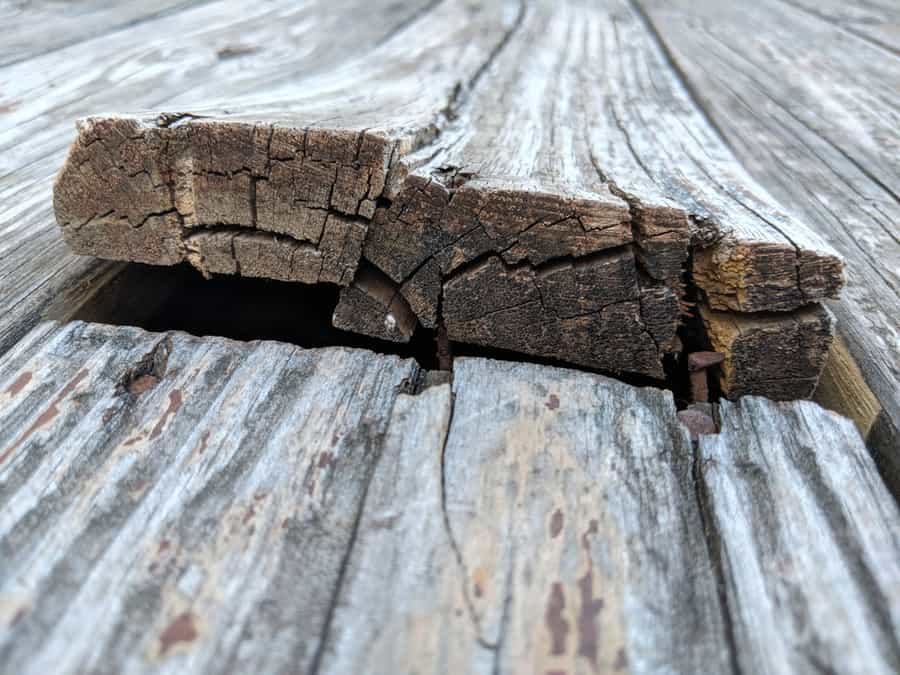
Decks are a summertime staple, the place to hang out with friends and family while cooking burgers and other delicious foods on the grill.
Warped deck boards can ruin your summer fun – they’re an eyesore and can pose a tripping hazard.
Let’s look at ways you can straighten your bowed deck boards, and you’ll be ready to party outside all year long.
Fixing a crooked deck board might only take a few minutes, but it will give you a lifetime of satisfaction.
Let’s explore why decking warps in the first place. Knowing the causes of warping will help you avoid warped deck boards in the future. Acclimating any new wood before installing it is critical.
You can attach your decking with screws or nails, but screws hold better and make removing boards easier. Either way, you’ll need to drill pilot holes in the decking to run your fastener through.
There are four ways that wood can warp. It can bow, cup, crook, or twist. We’ll look at the differences between each type of warping and discuss solutions unique to each that will make your decking flat and straight.
Next, we’ll go over some tips and tricks that can be used for new deck construction and on existing deck boards.
The differences between treated lumber, cedar, and engineered decking will be examined in this section.
To cap it off, we’ll explore whether you should finish your deck with a stain, sealer, or paint.
Spoiler: these finishes will help extend the lifespan of your decking, reduce the likelihood of future bowing, and enhance your wood’s natural beauty.
How you fix your bowed deck boards will be contingent on the bow your decking has. We will discuss what causes wood to bow, the different types of warps, and how to solve them.
Why Decking Warps
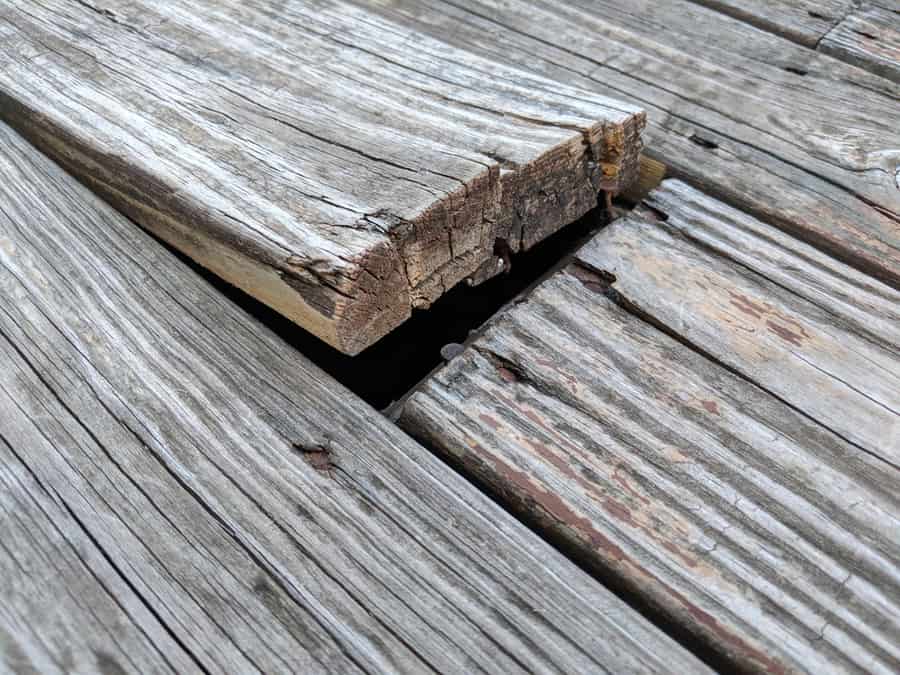
To understand how to fix something, it’s vital to understand why the problem is occurring in the first place. With warped deck boards, the problem is moisture trapped in the wood.
The boards warp because they have a higher water content than the air surrounding them. The decking will shed this excess moisture until it has the same moisture content as the air.
As the wood dries, it shrinks, and this shrinking can lead to bowing.
Acclimation is the process of letting wood condition in its new climate. Typically people think of acclimating wood flooring before installing, but it’s also critical to let your decking acclimate to your local environment.
To acclimate your deck boards, allow them to sit outside near the area they’ll be installed for at least a week before installing them. The material must also be elevated off the ground, so air can flow around the boards.
Use some scrap lumber or whatever is handy to keep your decking off of your concrete.
How Wood Bows and How To Fix It
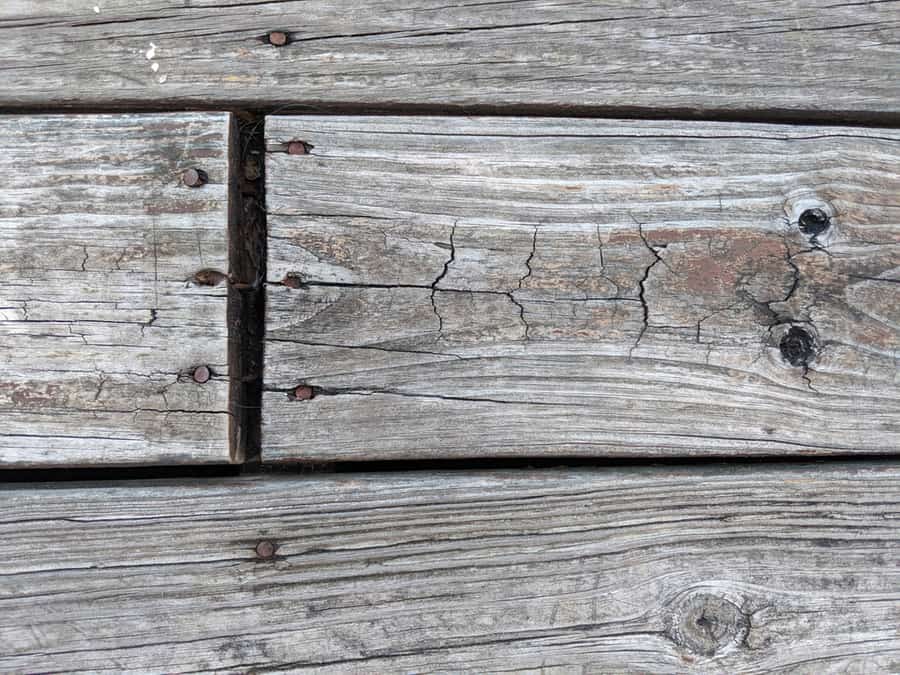
There are four different ways that wood boards tend to bow. They can either “bow,” “cup,” “crook,” or “twist.” Let’s examine each way that wood can warp. Sometimes wood can have multiple types of bowing at once.
Decking is usually around an inch thick, and the typical length of fastener for decking is 2″. The choice between screws and nails is yours, but screws will hold better, particularly if your wood is bowed.
Screws also attach faster, allowing the decking to be removed easily when necessary, and you don’t risk damaging the wood with a poorly swung hammer.
If you use screws or nails, predrill the decking with a pilot bit where your fastener will go. Use a pilot bit that is slightly smaller or the same size as the shank of your fastener for the best results.
Whichever you choose, make sure you buy screws or nails that are intended for exterior use.
If you buy nails, ensure they’re braided, as braided nails hold better than non-braided.
1. Bow
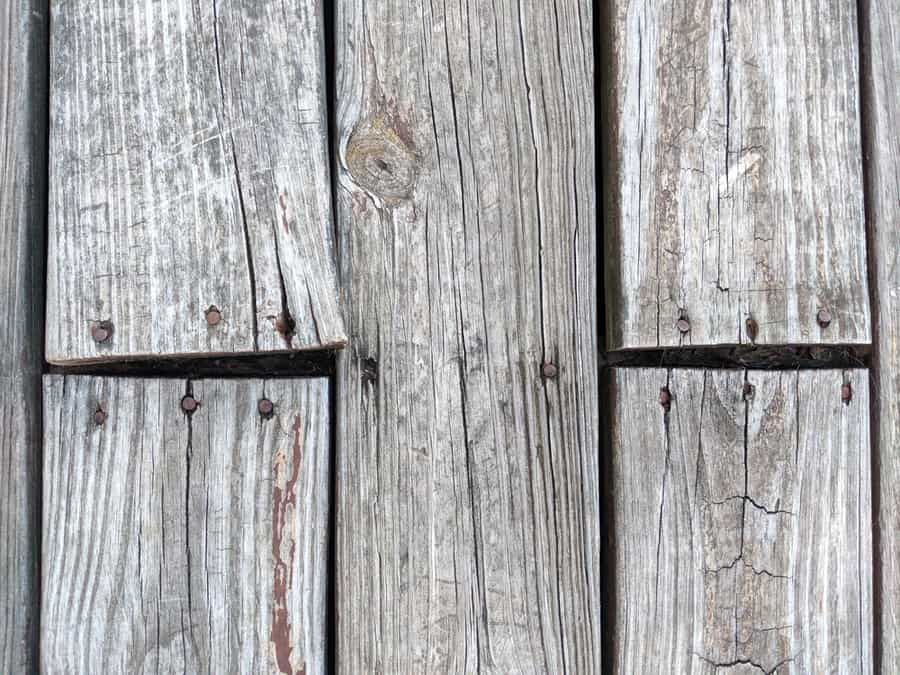
To determine if your decking has a traditional bow, lay it flat on your deck. The board is bowed if it lays like a banana on the deck, with one or either side in the air.
To straighten a bowed deck board, screw or nail it from one side. Work to the other end, adding screws at each deck joist.
When you reach the bow, either stand on the elevated part of the board to bring it true to the joist or use a bar clamp to clamp the decking to the joist below.
Continue attaching along the length of the board until the entire board is fastened.
2. Cupping
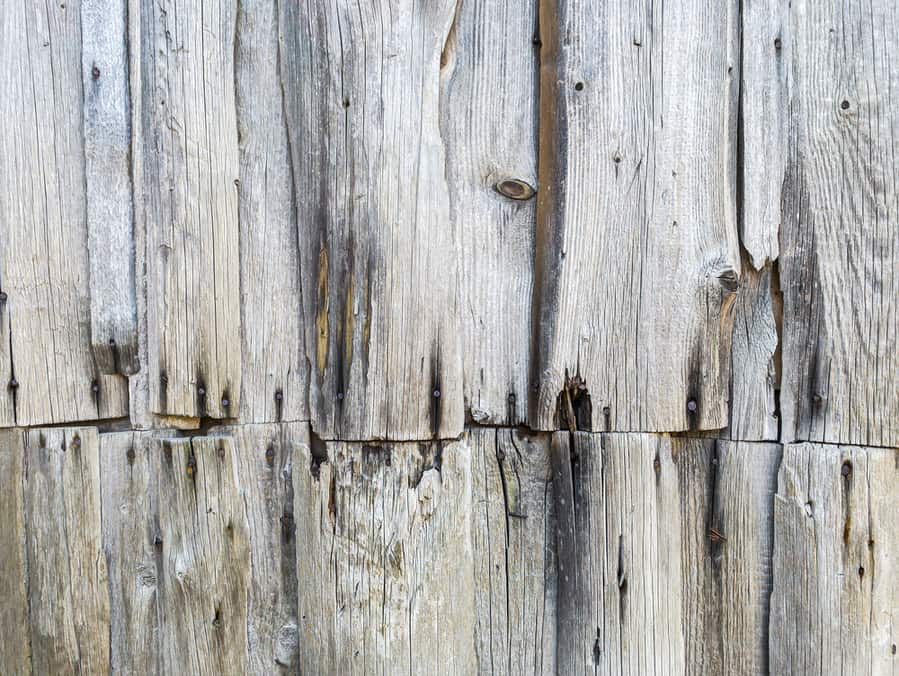
Examine your board from the end by the cut grain. If it resembles a “U” or an upside-down “U,” it’s cupped.
To reduce the cupping of your board, clamp it to the joist below with a bar clamp, and attach it with a fastener. If you can’t fit a bar clamp in there, attempt to stand on the board to bring it flush with the joist.
Screws will reduce cupping more than nails; adding additional screws everywhere the decking is mounted to the joists can also help.
3. Crook
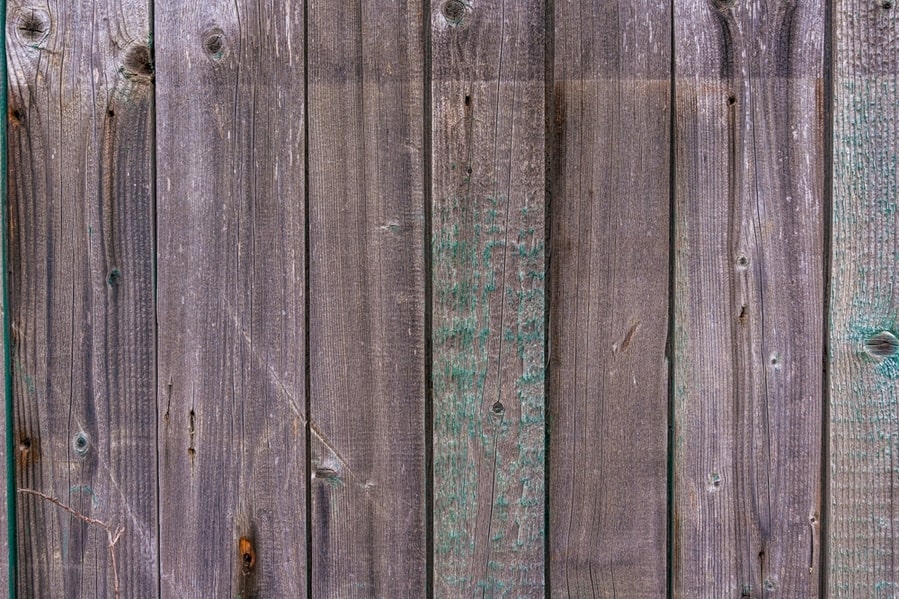
Decking that has a crook is the most difficult to straighten, but it can be done. You’ll need a hammer and a chisel or flathead screwdriver. Attach the board to your deck frame until the crook starts.
Then pound your chisel or screwdriver into the next joist, tight to the decking. Pull back on the chisel or screwdriver as a lever to pull your decking tight to the last piece of decking.
Attach with screws, and continue using your chisel or screwdriver the length of the board until the board is even with the previous deck board.
4. Twist
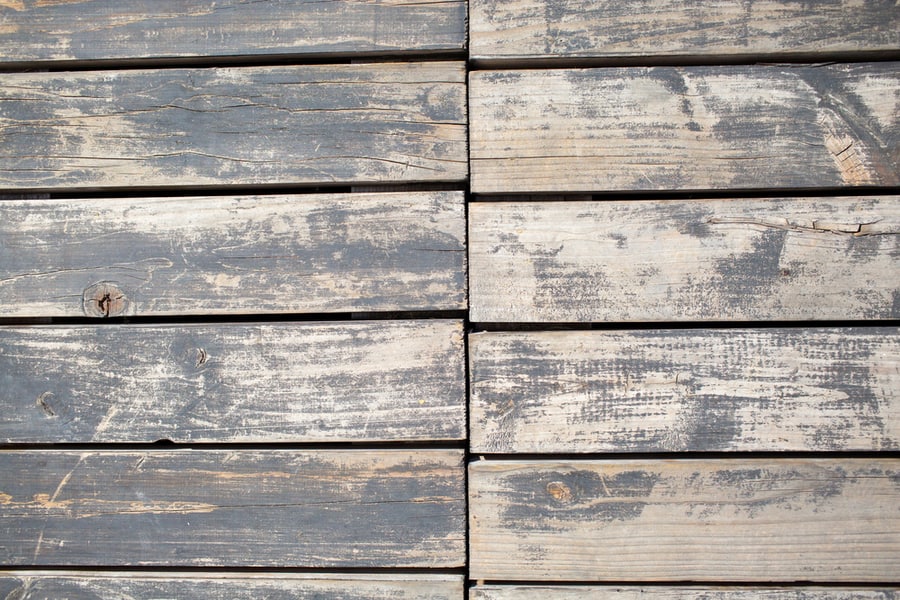
Boards with a twist have a spiral-like warp in them. To fix a twist, work the length of the board using a bar clamp or your body weight to hold the board tight to your joist.
Attach with fasteners as you work the length of the board.
Tips for New and Old Decking
New and old decking vary in a couple of ways. You’ll have more room to maneuver when laying new deck boards, so there are a few more tricks to getting a bowed board to lay straight.
New decks also allow you to pick which material you’ll use and engineered and cedar boards are typically straighter than treated lumber.
1. New Deck Tips
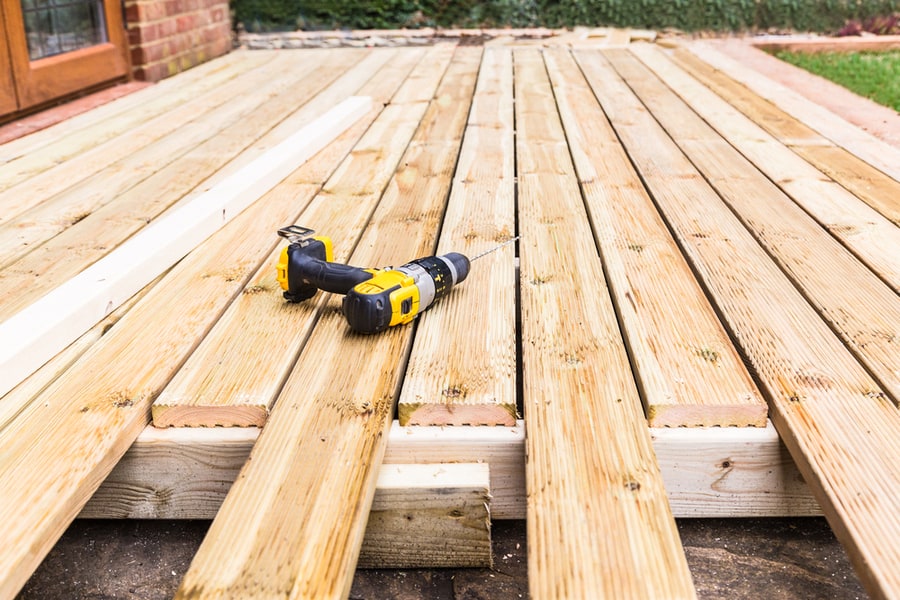
When building a new deck, you can often avoid some common problems that lead to warping in the first place.
The first thing you’ll want to do is select straight boards. Dig through that pile of lumber and only pick decking that runs true.
Avoiding boards without any bowing is the easiest way to minimize warping in the future.
When building a new deck, you’ll likely pick between two types of wood (engineered options can also be bowed).
Pressure-treated lumber is pine that has been pressure treated with chemicals that extend the life of the lumber when used outdoors.
It is less expensive than cedar, is long-lasting, and can be stained or painted after its seasons for a year. Pressure-treated lumber is more likely to bow than other options.
Since treated lumber has added water and chemicals, it is significantly heavier than cedar. The added moisture makes it more likely to bow, as well.
Cedar is a softwood prized for its beauty, as well as its natural resistance to the elements.
Cedar is less likely to bow than pressure-treated lumber and can be stained or painted immediately. It is more costly than treated lumber, however.
2. Existing Deck Tips

Existing decks with bowed boards are more challenging to fix than when laying new decking. Often, you can’t fit a bar clamp in between boards without removing a significant portion of the deck.
Wedging a screwdriver or chisel between boards to fix a crook can be impossible.
Try removing the old fasteners and then adding new ones, preferably screws. This can often straighten cupped or bowed boards.
If you cannot fix the bowed boards using these methods, you’ll have to replace them with new decking. Determine if your deck is treated or cedar, and buy the same material.
If your deck is stained or painted, take a sample board to your local paint store to match the color.
Finish Your Deck
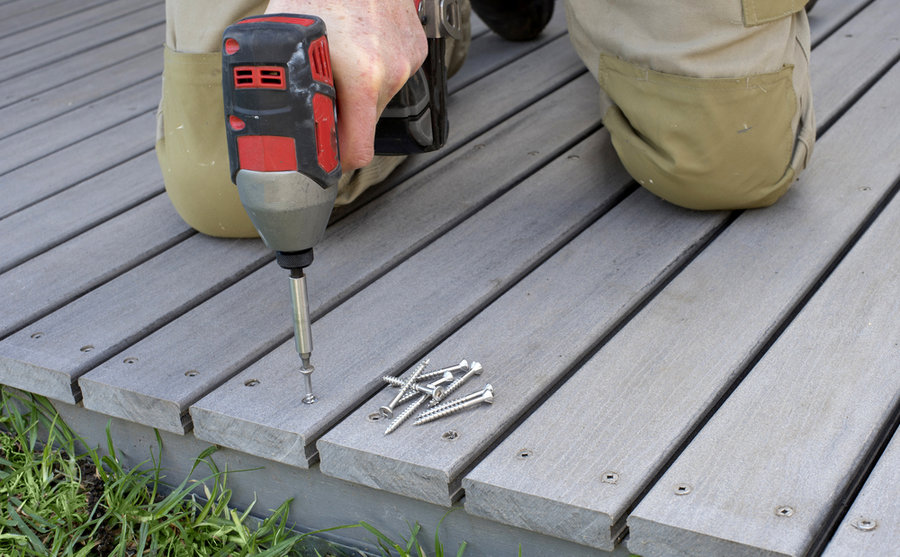
While this is optional, particularly with cedar, finishing your deck with a sealer, stain, or paint is a good idea. Adding a finish will extend the life of your decking and can enhance its appearance.
Check the options at your local paint store to determine which finish best suits your needs.
Finishes also help seal wooden decking, which reduces entry points for moisture and makes the wood less likely to bow in the future.
Remember, if your deck has newly installed treated lumber, it will need to season for at least a year before a finish can be applied.
Enjoy Your Deck
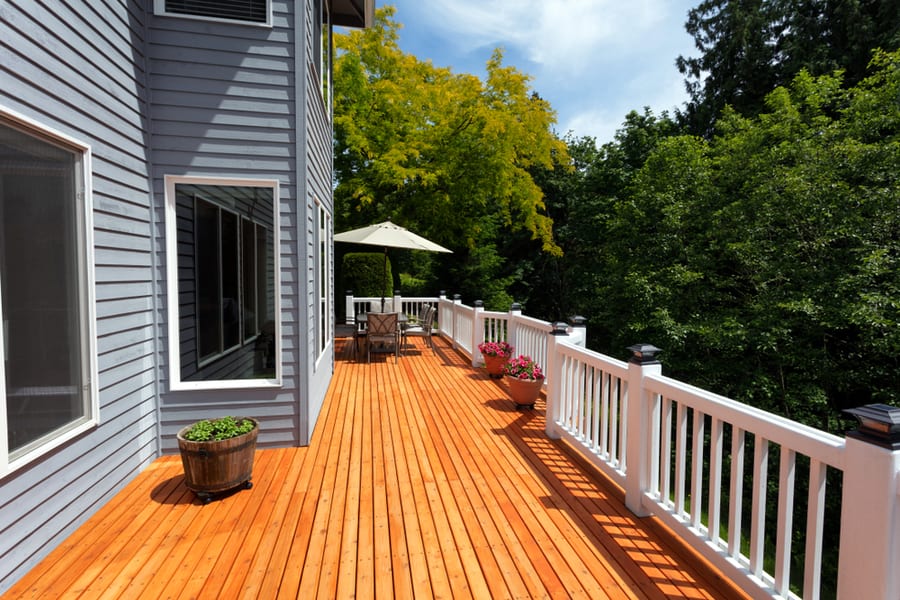
Warped deck boards aren’t just an eyesore – they can be a dangerous tripping hazard. Whether your boards are cupped, bowed, crooked, or twisted, there are ways to fix them, so they lay flat on your deck and give you years of outdoor joy.
When building a new deck, you’ll have to pick between cedar, treated, and engineered decking.
They all have strengths and weaknesses, so choose the deck material that will work best for you.
Adding a finish to your deck can extend its lifespan and make it more attractive, so look into painting, staining, or sealing your deck.
